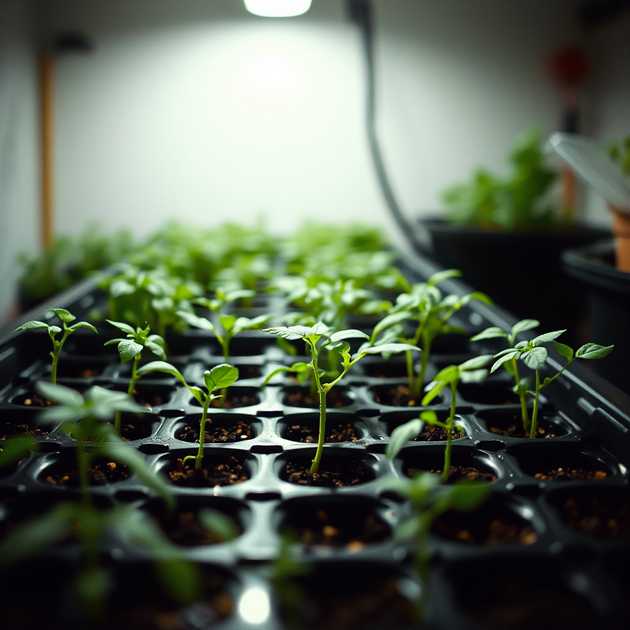Seed Starting Methods for a Thriving Garden
As a home gardener, I'm excited to share with you some effective seed starting methods to help you boost your germination rates and get your plants off to a flying start. With a little creativity and the right techniques, you can increase your chances of success and enjoy a bountiful harvest.
Cell trainers are a popular method for starting seeds and for good reason. They're easy to use, inexpensive and provide excellent results. Simply fill a container with a good quality seed starting mix, plant your seeds about 1/4 inch deep and cover with a clear plastic bag or cloche. This will maintain a consistent temperature and humidity level, perfect for germinating seeds.
2. Hydroponic Systems
Hydroponic systems are another effective way to start seeds. These systems use a nutrient-rich solution rather than soil, which reduces the risk of fungal diseases and promotes healthy root growth. You can use a DIY setup or purchase a pre-made system and it's perfect for starting seeds for vegetables, herbs and flowers.
3. Paper Towel Trainers
Paper towel trainers are a simple and inexpensive method for starting seeds. Simply moisten a paper towel, place your seeds on it and cover with another paper towel. This will help maintain humidity and provide a warm, cozy environment for your seeds to germinate. I started a small lemon plant like this about a year and a half ago.
4. Greenhouse or Cold Frame
Starting seeds in a greenhouse or cold frame provides a controlled environment that promotes healthy germination. These structures can be as simple as a cardboard box or as elaborate as a full-fledged greenhouse. The controlled temperature and humidity will help your seeds to germinate quickly and successfully.
5. Seed Starting Mix
Using a high-quality seed starting mix is essential for successful seed germination. These mixes are specifically designed to provide the right balance of nutrients, pH and moisture for seedlings to grow. You can purchase seed starting mixes at most gardening stores or online. Sterilized coconut coir has become very popular and works very nicely. Others use peat but there's a lot of debate on the sustainability of peat.
6. Baking Soda and Water
This old trick is still a favorite among gardeners! Mix 1 tablespoon of baking soda with 1 tablespoon of water to create a pH-balanced solution that will help your seeds germinate. This method is effective for starting seeds for vegetables, herbs and flowers.
7. Soilless Mixes
Soilless mixes, also known as seed starting mixes, are designed to provide the right balance of nutrients and moisture for seedlings to grow. These mixes are often used for starting seeds for vegetables, flowers and herbs. They're a great option for gardeners who want to avoid the hassle of working with soil.
8. Toilet Paper Rolls
Save the cardboard rolls from your used toilet paper. Put the saved rolls in a container and fill them with your favorite seed starting mix like coconut coir. Put in your seeds of choice and spray to moisten. Once the seedling is large enough to transplant outside, just take the whole roll and bury it in your pot, the ground or raised bed. The cardboard will breakdown over time and the seed will be transplanted while experiencing much less shock than traditional methods.
9. Coffee Grounds
Spent coffee grounds are a great natural fertilizer for seedlings. They're rich in nitrogen, phosphorus and potassium, which will help your plants grow strong and healthy. Simply mix coffee grounds into your seed starting mix or use them as a standalone fertilizer. Spent coffee grounds won't change the acidity of our soil but fresh coffee grounds might so stick to spent coffee grounds.
10. Compost Tea
Compost tea is a liquid solution made by steeping compost in water. This will provide a nutrient-rich solution that will help your plants grow strong and healthy. Simply steep a bucket of compost in water for 24 hours, then strain the liquid and use it as a fertilizer.
By incorporating these seed starting methods into your gardening routine, you'll be well on your way to increasing your germination rates and enjoying a bountiful harvest. Happy gardening!

